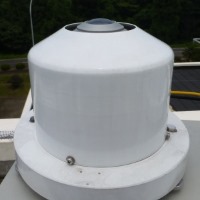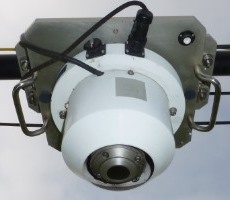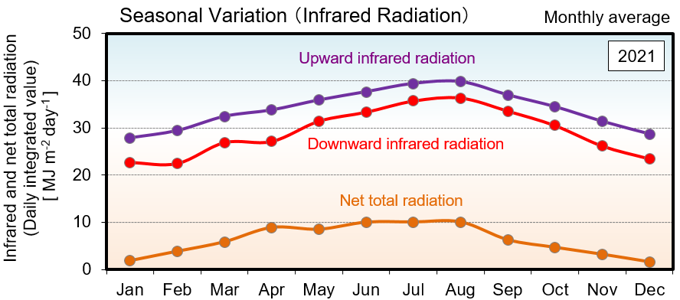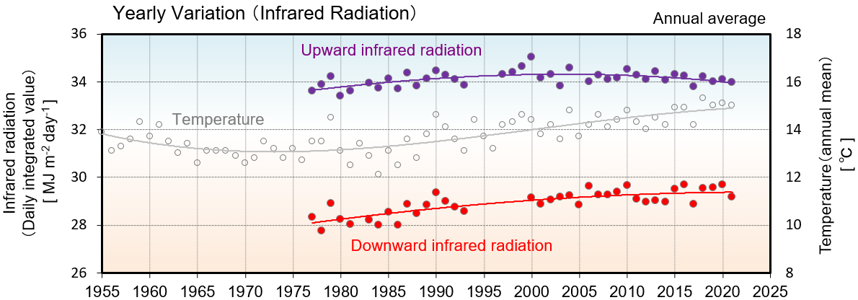Observation of Infrared Radiation
Principles and theory of measurement
All materials emit electromagnetic radiation in proportion to the fourth power of their temperature. The earth and its atmosphere emit infrared radiation with wavelengths longer than those of solar radiation because their temperature is lower than that of the sun’s surface. Most of the energy of the infrared radiation emitted from the earth and its atmosphere is concentrated in the 3 - 100 μm range.
A pyrgeometer is used to observe infrared radiation. This is a thermopile radiometer with a sensor that converts absorbed radiant energy into thermal energy using a thermocouple. It allows measurement of infrared radiation with high accuracy regardless of wavelengths.
Observation types
- Downward infrared radiation
- Infrared radiation is radiant energy emitted from atmospheric air molecules, cloud and carbon dioxide. Also known as atmospheric radiation, it is defined as the total amount of infrared radiative energy reaching a horizontal plane per unit area.
- Upward infrared radiation
- The component of infrared radiation emitted from the earth's surface into the sky is referred to as upward infrared radiation. It is defined as the total amount of upward infrared radiative energy reaching a horizontal plane per unit area.
Observation methods
A pyrgeometer is used for observation of infrared radiation. The instrument’s sensor is covered with a silicone dome to keep out wind and rain, and the unit is ventilated to improve measurement stability. The inner surface of the dome has an interference filter that cuts out short-wavelength radiative energy from the sun.
- Downward infrared radiation
- Downward infrared radiation is observed using a pyrgeometer mounted horizontally on a solar tracker with its silicon dome shaded from solar beams.
- Upward infrared radiation
- Upward infrared radiation is observed using a pyrgeometer mounted horizontally downward on a pole above the ground at a height of 1.5 - 2 m.

Pyrgeometer used for observation of downward infrared radiation

Pyrgeometer used for observation of upward infrared radiation
Observation results
Infrared radiation observation data are acquired from regular one-second samplings, and their quality is checked to ensure compliance with Baseline Surface Radiation Network (BSRN) specifications. Examples of data from observation at Tsukuba are shown below.

Seasonal variations of monthly averages at Tsukuba (2021)

Long-term variations of annual average infrared radiation at Tsukuba